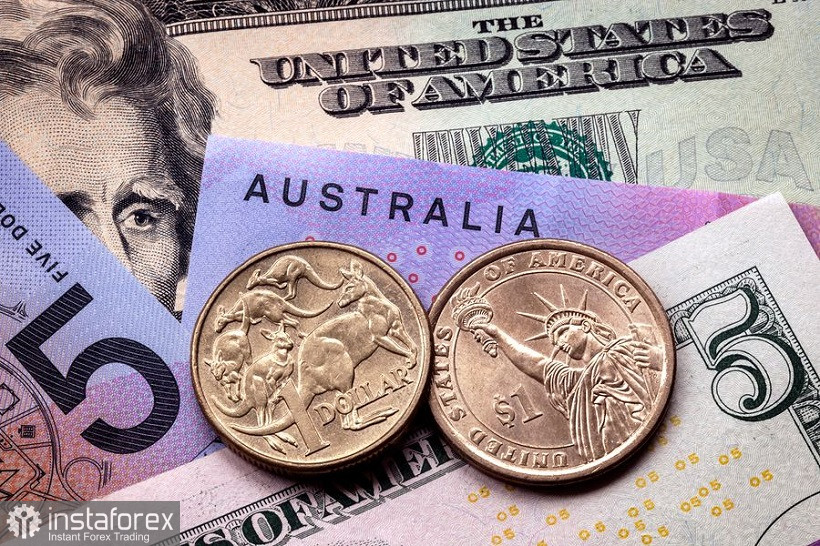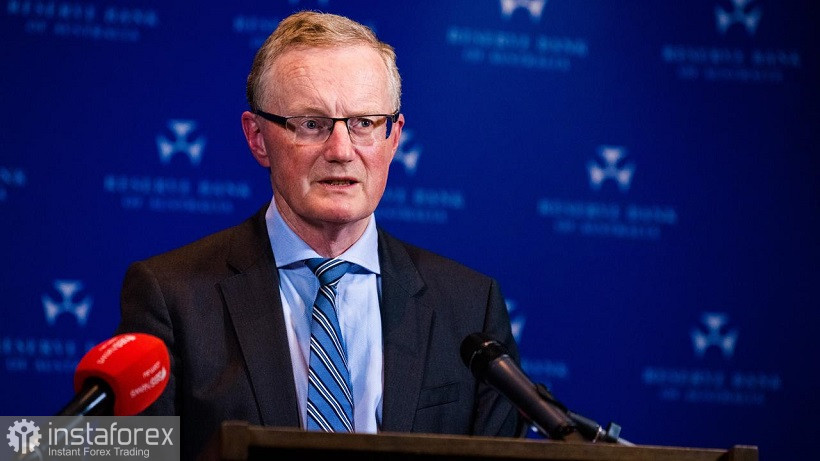During Tuesday's Asian session, the minutes of the Reserve Bank of Australia's April meeting were released. This document supported the Australian dollar, although this support was of a short-term nature. Nevertheless, the fact remains that the minutes reflected the hawkish attitude of the RBA members, who did not rule out the option of raising the interest rate within the current year. However, after a short-term rise to the borders of the 74th figure, the AUD/USD pair did not hold its positions. Today's release failed to reverse the downward trend, allowing the bears to go on short positions at a more favorable price. This price dynamics is explained by several fundamental factors.

First of all, it should be noted that the RBA's April meeting took place even before the release of data on the growth of the labor market in Australia. Let me remind you that almost all the components of this release came out in the red zone, to the surprise of most experts. For example, the unemployment rate in March remained at 4 percent, while analysts predicted a further decline to 3.9%. The indicator of the increase in the number of employed was also disappointing: this indicator increased by only 17,000 in March, although experts predicted a 30,000 increase. At the same time, this indicator grew by 77,000 at once in February. The March result is the weakest since October last year, when the indicator went into negative territory altogether.
I repeat – the Australian Nonfarm data were published after the RBA's April meeting. Therefore, AUD/USD traders reacted rather restrainedly to the minutes published today. The fact is that some of the wording of this document has lost its significance. For example, the minutes states that "the strength of the Australian economy is evident in the example of the labor market. This factor has moved the probable date of the first interest rate increase to a closer date." In the context of the latest release, this phrase sounds somewhat illogical, given the fact that almost all components of the report turned out to be weaker than forecasts.
As for Australian inflation, at the moment we can work with outdated data – for the fourth quarter of last year (Australia publishes inflation reports quarterly). More recent CPI figures are not yet available. The April meeting's minutes state the fact that inflation increased in the last reporting period and the central bank "expects its further growth." In the fourth quarter of 2021, the consumer price index in Australia really jumped to 1.3% on a quarterly basis (with growth forecast to 1.0% and the previous value of 0.8%) and to 3.5% in annual terms (with growth forecast to 3.2% and the previous value of 3.0%). The core inflation index (using the truncated average method) rose to 1.0% q/q. In annual terms, it increased to 2.6%, which is the best result since 2008. According to the forecasts of the central bank, inflation rates in the first quarter of this year "will be above 3%."
The forecast is certainly promising, and if it is really implemented, then the probability of a rate hike this year will increase as much as possible. However, if inflation still falls short of this forecast, it will be difficult to predict the reaction of the RBA. In addition, the Australian central bank has traditionally taken care of the dynamics of wage growth. On the one hand, the central bank noted that wage growth has accelerated. On the other hand, the minutes states that "in aggregate terms, wage growth was below the pace that would correspond to inflation, which steadily reached the target level." By the way, the ECB also faced a similar problem: in the European region, wages cannot "catch up" with rapidly growing inflation.

Thus, the minutes of the RBA's April meeting certainly reflected the hawkish attitude of the central bank. Members are ready to consider raising the rate this year, obviously, in the summer or early autumn. However, the market, firstly, has already played this hypothetical probability (this option was repeatedly admitted by Philip Lowe in his speeches), and, secondly, traders are wary of such intentions in light of the latest release in the Australian labor market.
In addition, the Australian dollar in the AUD/USD pair is now moving in the wake of the US currency, which sets the tone for trading. The US dollar index approached the 101st figure today, reflecting increased demand for greenback. The dollar follows the yield of treasuries, which also sets long-term records against the background of hawkish expectations. By the way, today, Federal Reserve representative James Bullard (who has the right to vote in the Committee this year) said that he was "open to the option of a 75-point rate hike at the May meeting." The rest of his colleagues had previously expressed their readiness for a 50-point increase. It is also worth noting that the US currency is the beneficiary of geopolitical tensions, being a protective tool.
Thus, it is advisable to use the current corrective growth of AUD/USD to open short positions. The main bearish target is the 0.7280 mark, which corresponds to the upper boundary of the Kumo cloud on the D1 timeframe.
 English
English 
 Русский
Русский Bahasa Indonesia
Bahasa Indonesia Bahasa Malay
Bahasa Malay ไทย
ไทย Español
Español Deutsch
Deutsch Български
Български Français
Français Tiếng Việt
Tiếng Việt 中文
中文 বাংলা
বাংলা हिन्दी
हिन्दी Čeština
Čeština Українська
Українська Română
Română

